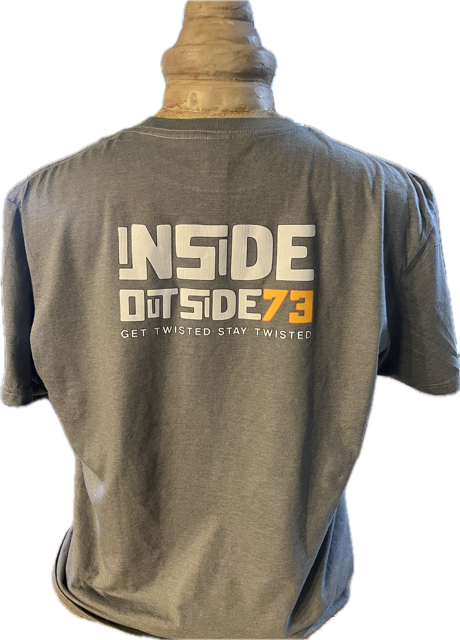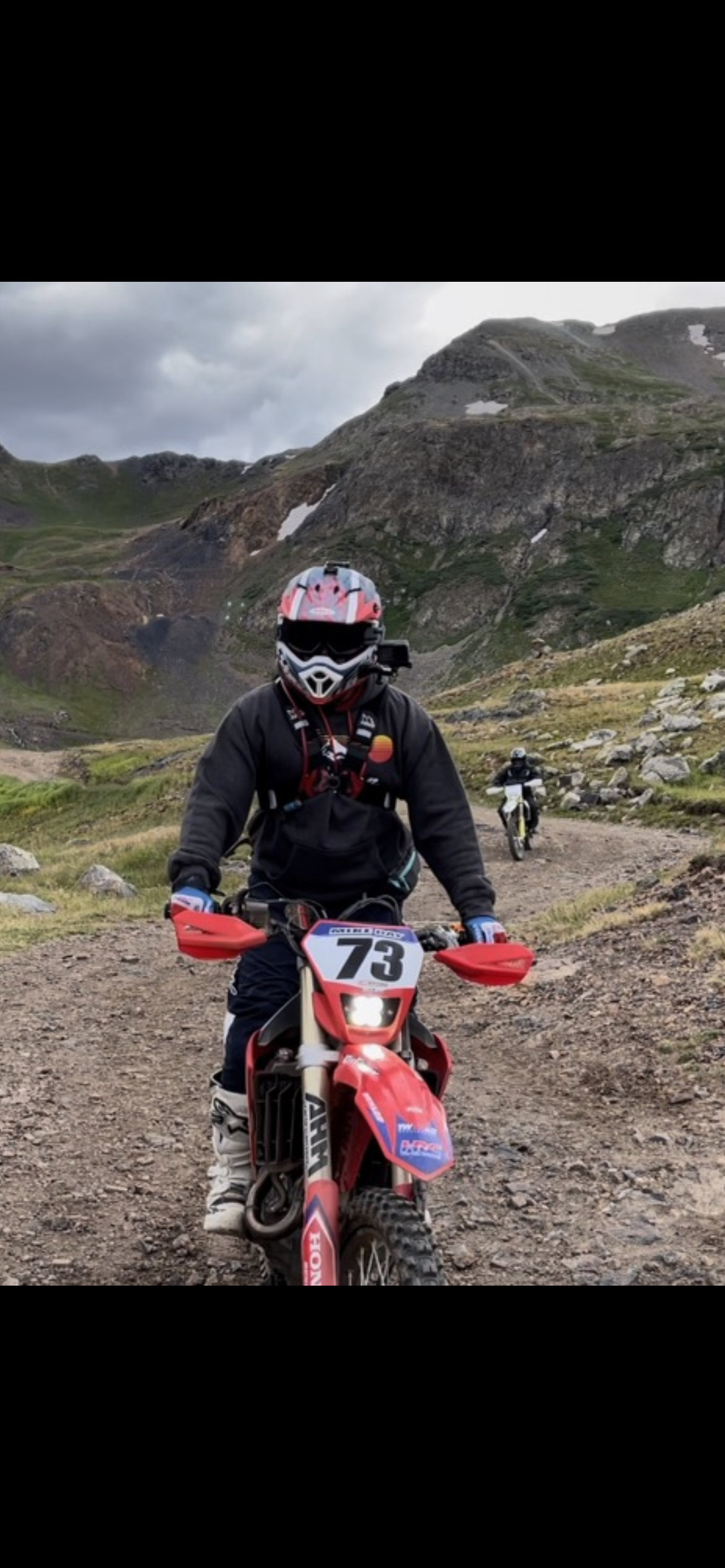
Stay In Your Zone
Learn why riding within your skill level is the key to safer, more confident off-road adventures. Today We Ride shares tips on staying focused, avoiding peer pressure. and enjoying every ride at your own pace.
Throughout my life I have ridden with a lot of different people. The biggest mistake I see other riders do is they compare themselves to others. To be a successful rider you must establish your zone and stay in it. The competition is against yourself. The minute you try to put yourself in someone else’s zone you have done yourself a great disservice and put yourself in a very dangerous situation. Its like sailing a boat but you’ve never been on a boat. Baby steps lead to big accomplishments. Stay focused on what you are doing and challenge yourself to be better and do it at your pace no matter what that pace may be. I don’t care how fast you are, if you are on the ground you aren’t fast. You are going nowhere when you are not upright. The slowest rider is better than the fastest rider if the fastest rider is on the ground or in a hospital bed.
Get up off your Butt!!!
Standing up on your dirt bike improves control, balance, and confidence. Here’s why getting off the seat is one of the most important riding techniques for any terrain.
I watch a lot of dirt bike videos on Youtube, Instagram, TikTok, and Facebook and something I notice a lot is a lot of riders just sit on their butt the whole time they’re riding. Here’s a few reasons why this is a bad idea. #1: Every bit of movement of the bike is being transferred through your spine. #2: Your body position is incorrect. Sitting forces your knees forward beyond the pegs. Your upper body is unable to get up over the front of your bike. Your weight is centralized at the seat and too far forward if you sit in the saddle. All of these being poor body position and terrible technique. #3: Center of gravity is moved higher on the bike because the majority of your weight is centralized on the seat instead of the pegs, which is where it should be. Stand up and get more stability, because you have moved the weight lower to the ground. It might feel odd or uncomfortable to make this change for you seat riders, but believe me you will become a much better and safer rider if you get up off your Butt!!! If it matters to you, you will get a lot more respect from other riders who know proper technique, because sitting on your butt all the time is a sure sign you’re not that good or you’re not very fit.
Cornering
Take corners like a pro! Learn the techniques that improve control, speed, and confidence on every turn.
Cornering on a dirt bike, especially off-road, requires a blend of balance, technique, and terrain awareness. Here are key tips to help you corner more effectively and confidently:
1. Choose the right line. Look ahead through the turn, not at your front fender. Looking ahead allows you to plan before you reach the corner. Looking ahead also allows you to avoid any upcoming hazards. Outside, inside, outside: Enter wide, apex tight, exit wide (when terrain permits). Entering wide allows you to see more of what’s coming ahead, giving you the opportunity to adjust your line to avoid any unfavorable obstacles. Avoid ruts, rocks, or soft spots unless using them increases traction. Soft spots almost always robs your bike of power.
2. Body Position
Sit forward: Get your weight over the front of the bike for better front-end traction.
Elbows up: Maintain control and leverage over the bars.
Leg out (flat turns): Extend your inside leg toward the front axle, not straight out to the side.
Weight the outside peg: This improves traction and stability. To get this correct picture yourself doing a one legged squat on that outside peg.
3. Throttle and clutch control
Smooth, controlled throttle helps maintain traction. If your throttle response is too abrupt you disrupt the balance of the bike and that in return binds the chassis and suspension up not allowing it to work correctly. As much as possible you want to stay off the brakes and the clutch, which allows the bike to operate smoothly. When braking think ahead and get your braking done before you ever get to the corner, maintain a roll speed that will allow you to stay in control of your bike. Stand up until you are well into the corner, then sit and roll the throttle smoothly out. This is how you keep momentum and flow. Hammering the throttle or braking into the corner does nothing but disrupt the flow. Another great tip is to shift up. You do not want your bike revving to the moon. This is another disruption to the bikes overall handling. A screaming motor does not equate to speed. It sounds fast, but it is not.
Use the clutch to modulate power-especially helpful in tighter turns or slick conditions.
4. Bike lean vs Body lean
Bermed corners: Lean with the bike, keeping your body in line.
Flat corners: Lean the bike more than you lean your body.
Sand or loose soil: Stay more upright and steer with body weight shifts rather than full lean.
5. Traction awareness
Adjust cornering speed based on terrain (mud, gravel, hardpack).
Use knobby tire edges effectively-don’t oversteer or slide too soon.
^. Practice drills
Set up cones or markers and practice:
Figure 8’s
Increasing/decreasing radius turns.
Brake slide control into turns. Do not do this in rutted turns. Works best in smooth bowl turns.
Bonus Tip: Get braking done before the turn, especially the back brake. This allows the chassis to settle down and perform correctly. You can slightly drag the front brake, but make sure it is slightly or you will lose your front end.
Stay loose-Grip the bike with your legs, not your arms. Turn your toes in and heals out.
Stand when needed, especially in rutted or bumpy corners, to let the bike move beneath you. When you stand the center of gravity is at the pegs. When you sit the center of gravity is at the seat. The lower the center of gravity the more stable the bike will be. Get up off your ass whenever possible. Doing so will lead to much faster riding and much less body wear and tear. I can’t stress this enough-Get up off your ass! If you find this difficult then you are not in proper shape to be riding a dirt bike. Work on that. You can only perform at a level that your body is ready for. I suggest body weight squats, stair climber, and ab work.
I hope you will find some usefulness out of this information. I know I did when it was offered to me.
Today We Ride, because Tomorrow We Ride Again.
Sometimes Less is More
Sometimes less is more. By easing off the throttle, shifting up, and lowering your RPM's you let your bike’s chassis and suspension do their job-smoothing out the ride, improving traction, and giving you more control.
Sometimes less is more. What I mean by that is sometimes getting off the throttle and relaxing the bike allows the bike to perform as it was intended. Suddenly the chassis relaxes and feels more plush. The suspension starts reacting as it should. High RPM’s causes a lot of disruption in the bike and doesn’t allow it to handle properly. Think about when you get uptight about something? You start making mistakes, abruptly reacting and not thinking things through. That’s what your bike does when you are ringing it out at the wrong time. Shift up, ease off the throttle and flow, because that is what you will do when you calm down.
Your Fitness Is The Baseline To Riding A Dirtbike Correctly
Your fitness sets the foundation for every ride. Strength, Endurance, and flexibility aren’t just about staying healthy-they directly impact your control, balance, and stamina on the dirt bike, helping you ride smarter, longer, and safer.
Dirtbike riding is intense. One of the most strenuous and physically taxing sports there is. With that being said, you can imagine fitness being the greatest components to your riding success. Strength and Endurance-that’s what you need if you want to ride dirt bikes with any proficiency. The level of proficiency will mirror your level of fitness-Period! So what kind of training should you do? There are many ways to skin a cat, but the bottom line is find what suits you and keeps you interested and then just do the work. There’s no magic beans. You don’t need fancy, trendy gadgets. I’m old school, so I say put your riding boots on and go run in a sand wash. Drop and pump out as many pushups as you can, and then do it again and again. The best shape i’ve ever been in was when I would drop and do 70 pushups 6 times per day. I was lean, hard and strong. It is absolutely crucial to listen to your body and at the same time not let your mind talk you into being weak. Human nature is to take the path of least resistance, so you must fight against that instinct and do the work. This is why I say make your fitness training something you are interested in. If you dread the work it’s easy to let that mind of yours talk you into being mediocre. We can go on and on with this topic, but the point I want to emphasize here is to do the work. Your success will be a direct reflection of your pursuit to push beyond your current limits, and stay committed to your goals, no matter the challenges. Let’s Go! TODAY WE RIDE





